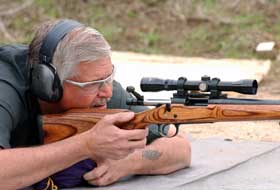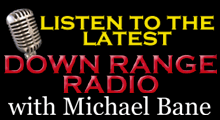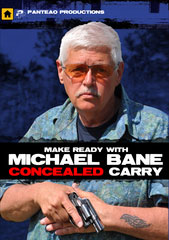Here are my definitions of levels of civil unrest and a little bit about how they might affect us:By all means, read the whole thing. We're going to be talking about some of these civil unrest concepts on DOWN RANGE Radio next week...
LEVEL ONE: The lowest level of civil unrest is when people turn on their own neighborhoods—as happened during the race riots of the 1960s and the Rodney King riots in Los Angeles. Level One civil unrest can be deadly and destructive, but primarily to people who live, work, or must travel in the immediate area. Level One unrest is spontaneous, Dionysian, is confined to a narrow geographical zone where the protestors live. Police response may be harsh, but it's localized. Unless you're in the middle of it, you're unaffected.
LEVEL TWO: Level Two civil unrest may also be focused on a single area. But in this case, rioters or protesters have deliberately targeted a business district, a facility, a transportation system, or an organization to impose maximum disruption. One example: the World Trade Organization protests in Seattle in 1999; young people with violence in mind and rage in their hearts attacked an entire downtown, affecting hundreds of businesses and tens of thousands of workers who hardly knew what hit them. Another example: This spring, protesters in Thailand shut down the Bangkok airport, affecting who knows how many individuals and businesses. Level Two unrest is usually planned or semi-planned. The target is chosen deliberately. Although still focused in one area, Level Two can disrupt normal life and business in a whole region or country.
LEVEL THREE: Level Three comes when mass unrest or authoritarian crackdown causes disruption at state or regional level. Then, no matter what the original cause or location of the trouble, everyone in the region is affected. Effects might include travel restrictions, random ID checks, mass arrests, food and fuel rationing, controls on money and banking, roadblocks, and other harsh "emergency" restrictions.
LEVEL FOUR: Level Four is Level Three—but on a national or even international scale. It's martial law. If things ever get this bad, it's likely that the government itself will be a far bigger threat to everyone's well being than whatever the original cause of the clampdown was.
And of course, any level of civil unrest can lead to laws, regulations, and harsher police policies that end up affecting everybody in the long run.
Thursday, July 09, 2009
Thoughts on Civil Unrest...
...from Claire Wolfe in Backwoods Home Magazine:
Subscribe to:
Post Comments (Atom)






7 comments:
Level 3, Like the recent election in Iran.
Level P -- The level at which the populace realizes the politicians have fleeced them, enslaved them, and the solution is a rope and a tree limb.
Level M -- The level at which the military realizes thieves and thugs are in control and everything spoken by a politician is a lie. Evidence recent activity in Hounduras.
I have a number of issues with Ms. Wolfe’s essay. Having witnessed a number of protests and riots around the world they are completely different events.
Protests may disrupt services or travel but they do not damage property or cause injuries. A sit down in an intersection is a protest, burning cars to block traffic is a riot.
At 5:31am;
Level P, Level M;
Those who wish to or have to be involved in the actualities of these activities, had better think of having the equivelent experience of basic training up to and including AIT. All said and done, a lot can be said for two to seven man sniper assault TEAMS That TRAIN TOGETHER "OFTEN" did I say OFTEN!
Like the man said, Level P- only the correct American response is to give the billionaires (who own said politicians- and us) a huge tax cut! Let's throw in total deregulation for 'em too! Then they can poison us while not letting us have- god forbid- the same govt insurance said politicians have.
Oh wait, that would be stupid.
Stratror had a newsletter recently addressing the civil unresst in Iran. It was destined to fail because the conditions were not right. There was not support from the majority of common people and the security forces had no sympathy for the protesters. Regimes fall to popular uprisings when their support is widespread and the security forces sent to supress them turn against the government.
So, make sure to support our troops, and make sure they are thinking about the meaning of the oath of enlistment and who they are loyal to, the people and the Constitution or the paymaster?
At 12:30 pm;
We have the Constitution and it's ALL important 1st. and 2nd. amendments (THAT PROTECT THE REST). The Iranians have a wish and a sharp sword.
The Oath is one that those who believe what they swore need NO-ONE to check on their loyalty.Those who have no loyalty will be known,you can't sell being an American Citizen to someone that has no concept of what it means to defend a communist/fascist government against it's people!?
Post a Comment